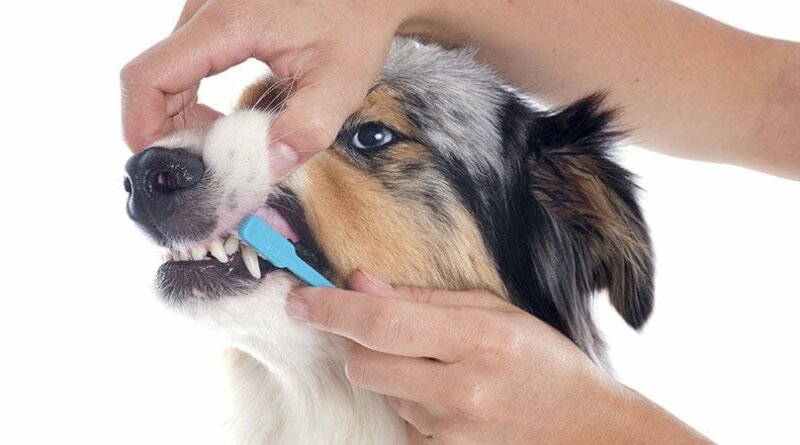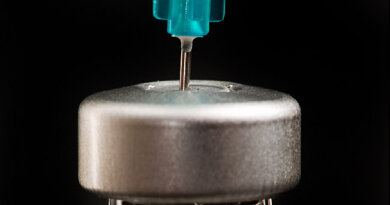7 Tips For Doggie Dental Care
The Importance of Dog Dental Care
The good news for dogs is they’re not as prone to cavities as human beings are. But despite the old conventional wisdom that a dog’s mouth is cleaner than a humans, dogs can still develop problems like tartar and plaque buildup and gingivitis. But it’s not just bad breath and yellow teeth you have to worry about. As with humans, these canine dental problems can actually lead to life-threatening infections and issues including heart, liver, and kidney disease.
Not to mention, the cost of dental extractions to remove teeth that are beyond help can range from $10/tooth for a simple extraction to more than $1,000 for a molar root canal. Best to save your wallet and your precious pup the trouble by taking preventive measures!
Here’s how to practice good dog dental care that will extend your dog’s life:
- Brush their teeth early and often!
- Take them for routine teeth cleanings
- Feed dry dog food
- Use chew bones and chew toys
How to Brush Your Dog’s Teeth
If your dog can brush his own teeth, you can stop reading this article and start posting the video to YouTube. For the rest of us, we have to use a canine toothbrush and a little strategy. The best brush to use is double-headed with the brushes at a 45 degree angle to clean below the gumline, like those offered by companies like Petosan.
Your dog might not go for the tooth brushing at first, but hopefully, you can make it a reasonably pleasant experience for both of you. Try and choose a time when your dog has had a decent amount of exercise, so he’s more inclined to sit still for the procedure. Don’t overdo it the first few times. Start slowly and quit if your dog gets agitated, even if you don’t brush the whole mouth. You can increase the time every day as he gets used to it. Also, make sure to speak soothingly and pleasantly during the brushing and reward your dog with a treat afterwards. Before too long, your dog should start looking forward to the event.
Start Early With Your Dog as a Puppy!
Grown dogs can learn to become comfortable with dog teeth cleaning, but make things easier for yourself by working with your dog as a puppy.
How to Pick the Right Tooth Paste for Your Dog
This is very important. Do NOT use regular human toothpaste for your dog. Most human toothpaste includes fluoride, which is extremely poisonous to dogs. You can find toothpaste formulated for dogs at most good pet stores.
Some pet stores also offer dog mouthwash, which you can add to water bowls to help kill bacteria and reduce plaque. When used correctly and diluted in your pet’s water, doggie mouthwash is safe, just make sure your pet doesn’t get ahold of the whole bottle. As with toothpaste, do not use human mouthwashes on your dog.
Dry Food is Better Than Soft Food
If the tooth brushing ends in blood, sweat, or tears, there are still choices you can make to help improve your dog’s oral health. Crunchy kibble is better for your dog’s teeth than soft food, as soft food is more likely to stick to the teeth and cause decay.
Chew Bones and Chew Toys to Clean Teeth
There are many synthetic bones and chew toys that are specially designed to strengthen your dog’s gums and teeth. Just make sure you’re providing safe objects for your dog to chew on. Hard objects can cause broken teeth.
Giving your dog a good bone to chew on can help get rid of build-up and keep teeth strong, but imagine a human who only chews gum and uses mouth rinse. That’s not an effective means of ensuring good dental hygiene and overall health. The same is true for your dog.
Routine Dental Cleanings
Despite your best efforts, you’re not likely to get your dog a full, deep clean with a toothbrush the way a vet can. Even if your pet has healthy teeth, it’s a good idea to have your vet perform routine cleanings where they scale plaque and tartar, clean the gum line, and polish the teeth. Depending on the size of your dog, you should take them in for a routine cleaning every six months to a year (smaller dogs may be more prone to plaque buildup and disease).
Your vet should include a simple dental examination with a normal check-up, too, but ask for it if they don’t.
If you have pet insurance, some providers offer preventive care coverage that you can add to your coverage that can help cover some of the costs of routine teeth cleanings. You may be more likely to keep up with routine visits, too, if you are already paying for some of it in your pet insurance policy.
When to See a Veterinarian
Whether you brush your dog’s teeth or not, you should have a look inside his mouth every week or so. If you notice any of these signs of dental problems, then take your dog to the vet:
- Bad breath
- Change in eating or dog chewing habits
- Pawing at the face or mouth
- Depression
- Excessive drooling
- Misaligned or missing teeth
- Discolored, broken, missing or crooked teeth
- Red, swollen, painful or bleeding gums
- Yellowish-brown tartar crust along the gum line
- Bumps or growths within the mouth
As mentioned, the treatment of serious dental issues can be costly, but it may be much more costly to your pet’s overall wellbeing to leave them unattended.
If your dog has health insurance and they develop dental disease, you may be eligible to be reimbursed for treatment of the issues above (if the disease isn’t considered a pre-existing condition on your policy).
Clean Now, Save Yourself Trouble Later
Dental care can be a hassle for humans and dogs, but proper maintenance can be a money saver in the long run and even a lifesaver. Letting it go can lead to costly and often painful vet visits down the road. Many dogs have to be given anesthesia to have their teeth and gums cleaned if the buildup is bad enough. Keep your dog’s mouth clean though, and you’ll both be smiling!
How often do you brush your dog’s teeth?




